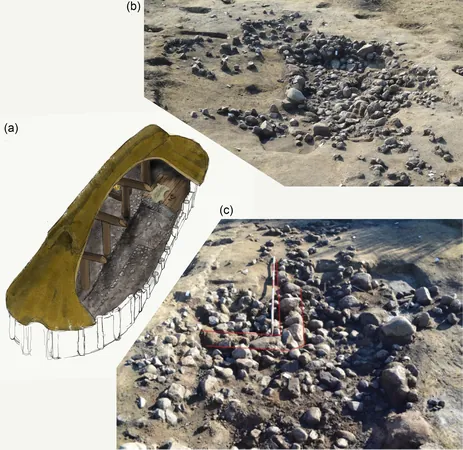
Unearthed: Advanced Stone Technology Reveals Secrets of Denmark's Neolithic Era!
2024-10-10
Author: Mei
A Remarkable Discovery
A remarkable discovery has shaken the world of archaeology—during the construction of a railroad on the vibrant Danish island of Falster, a 5,000-year-old Neolithic site has come to light, showcasing an unexpected marvel of ancient engineering: a stone-paved root cellar!
Findings from the Museum Lolland-Falster and Aarhus University
Researchers from the Museum Lolland-Falster and Aarhus University recently published their findings in the journal *Radiocarbon*, shedding light on the impressive architectural developments of the Funnel Beaker Culture, which emerged around 6,000 years ago. This shift heralded the region's first forays into agriculture and domestication of animals such as sheep, goats, and cattle, effectively setting the stage for a more sedentary lifestyle and leaving behind the nomadic ways of previous hunter-gatherer societies.
Excavations at Nygårdsvej 3
Excavations at Nygårdsvej 3 unveiled two distinct phases of house construction, displaying a sophisticated architectural design common in the Funnel Beaker Culture. The remains of both structures were supported by intricate post holes—38 in the first phase and 35 in the second—indicating careful planning and organization. Inside, the homes boasted floors made of compacted loam—a cutting-edge flooring technology for Neolithic people, which, surprisingly, remains in common use around the globe today.
Site Positioning and Artifacts
What’s particularly fascinating is the strategic positioning of the site, set slightly elevated to avert flooding and offering a commanding view of the picturesque landscape. The findings also included over 1,000 artifacts, such as flint tools and pottery, alongside fossilized sea urchins. Interestingly, these artifacts were predominantly located around the newly discovered stone cellar, suggesting a possible gathering area for food preservation or communal storage.
Advanced Resource Preservation
The stone-paved feature is not just a simple structure; it may represent an advanced method of resource preservation for the community. The remarkable stability of underground temperatures could have provided significant advantages to farmers, maintaining cool conditions in the summer and preventing food from freezing during harsh winters. This innovation would have been crucial for survival during the off-seasons and brutal winter months.
Radiocarbon Dating and Fence Discovery
Radiocarbon dating suggests that this cellar and the initial construction phase of the home date back to between 3080 and 2780 BC, while the second phase followed around 2800 BC. Additionally, researchers discovered seven rows of post holes nearby, potentially serving as a perimeter fence—possibly for protecting livestock or defending against the elements or rival groups. Intriguingly, these fences predate the house construction by several centuries, pointing to a long-standing strategic significance for the inhabitants of ancient Falster.
Conclusion and Future Research
Such unexpected discoveries often stir the pot of archaeological inquiry, leading to more questions than answers. The ongoing research aims to peel back the layers of history surrounding the Nygårdsvej cellar, promising to provide deeper insights into the daily lives of the early Funnel Beaker Culture in Denmark. Stay tuned as we continue to follow this groundbreaking excavation, unraveling the secrets of our ancient past! Who knows what other incredible technologies and mysteries may be hidden beneath the soil?





 Brasil (PT)
Brasil (PT)
 Canada (EN)
Canada (EN)
 Chile (ES)
Chile (ES)
 España (ES)
España (ES)
 France (FR)
France (FR)
 Hong Kong (EN)
Hong Kong (EN)
 Italia (IT)
Italia (IT)
 日本 (JA)
日本 (JA)
 Magyarország (HU)
Magyarország (HU)
 Norge (NO)
Norge (NO)
 Polska (PL)
Polska (PL)
 Schweiz (DE)
Schweiz (DE)
 Singapore (EN)
Singapore (EN)
 Sverige (SV)
Sverige (SV)
 Suomi (FI)
Suomi (FI)
 Türkiye (TR)
Türkiye (TR)